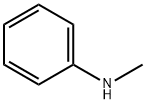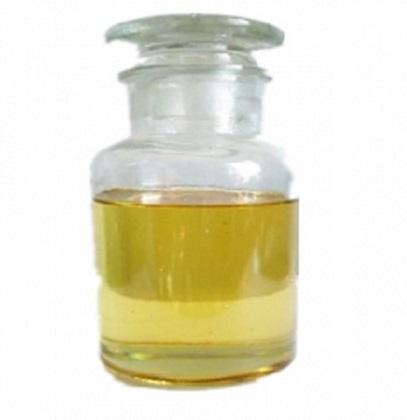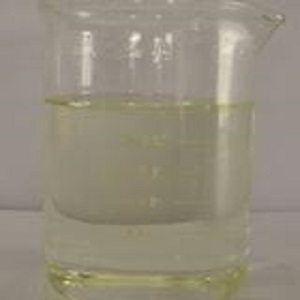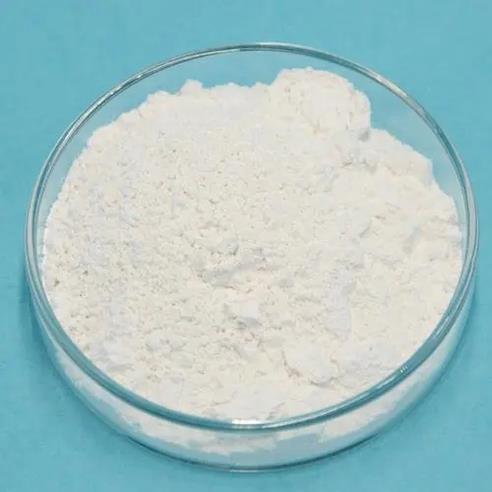N-Methylaniline: toxicology and application
General Description
N-Methylaniline is a chemical compound that belongs to the class of aromatic amines. It is commonly used in various industries for its versatile properties. With a molecular formula of C7H9N, N-Methylaniline consists of a benzene ring with a methyl group (-CH3) attached to the amino (-NH2) functional group. Research has indicated that exposure to high concentrations of N-Methylaniline can have harmful effects on various organ systems in the body, including the liver, kidneys, central nervous system, and hematopoietic system. Chronic exposure to N-Methylaniline has also been associated with potential carcinogenicity, particularly in relation to bladder cancer. Despite its potential health risks, N-Methylaniline has demonstrated promising applications in different fields. One area of interest is its use as a component in biosorbents, which efficiently remove Cr(VI) from water solutions. Furthermore, N-Methylaniline's electrochemical properties make it valuable in the development of sensors for measuring dopamine concentration and detecting carcinoembryonic antigen. These applications have potential implications in environmental remediation and clinical diagnostics.

Figure 1. N-Methylaniline
Toxicology
N-Methylaniline is a chemical compound that requires careful consideration due to its potential toxic effects. Extensive research has been conducted to evaluate the toxicity profile and potential health hazards associated with N-Methylaniline exposure. In terms of acute toxicity studies, it has been observed that N-Methylaniline can have adverse effects on different organ systems. Inhalation or oral exposure to high concentrations of N-Methylaniline in animal models has been shown to induce toxicity in the liver, kidneys, central nervous system, and hematopoietic system. These effects may include tissue damage, oxidative stress, inflammation, and alterations in biochemical parameters. Furthermore, chronic exposure to N-Methylaniline has been linked to cumulative toxic effects. Prolonged contact or repeated exposure to N-Methylaniline has been found to result in systemic toxicity, including potential carcinogenicity. Animal studies have indicated an increased incidence of tumors, particularly bladder cancer, following prolonged exposure to N-Methylaniline. However, it is important to note that further research is needed to fully understand the exact mechanisms and potential for carcinogenesis in humans. It is crucial to adhere to proper safety measures when handling and using N-Methylaniline due to its toxic nature. Protective equipment such as gloves, goggles, and respiratory protection should be used to minimize exposure. Proper ventilation and engineering controls should be implemented when working with this compound to prevent inhalation or dermal absorption. Overall, the toxicity of N-Methylaniline highlights the importance of responsible handling and proper safety precautions. Further research and regulatory assessments are necessary to establish comprehensive guidelines and ensure the safe use of this chemical compound. 1
![Article illustration]() Applications
Applications
Biosorbent
N-methylaniline plays a crucial role in the lignin-based biosorbent (LSMA) for efficient removal of Cr(VI) from aqueous solution. The LSMA, prepared by cross-linking lignosulfonate and N-methylaniline, possesses amino groups and oxygen-containing functional groups such as phenolic, carboxyl, and sulfonic groups. This unique composition enables LSMA to achieve a maximum adsorption capacity of 1264.8 mg/g at 318 K according to the Langmuir isotherm. Additionally, LSMA demonstrates excellent performance even at low concentrations of Cr(VI), being capable of fully removing a hazardous Cr(VI) solution of 50 mg/L within just 10 minutes. The adsorption process follows a pseudo-second-order kinetic model, indicating chemical adsorption characteristics. Furthermore, the adsorption process is spontaneous and endothermic. LSMA exhibits remarkable efficacy even in the presence of high levels of competing anions. The mechanism of action involves the adsorption of Cr(VI) anions on LSMA's abundant functional groups, along with the reduction of Cr(VI) to less toxic Cr(III) by adjacent electron donor groups. The formed Cr(III) is then immobilized on LSMA through surface complexation and precipitation. Overall, N-methylaniline in LSMA contributes significantly to its potential as a promising treatment option for Cr(VI)-contaminated water. 2
Electrochemical sensor
N-methylaniline plays a significant role in the development of an electrochemical sensor used for measuring dopamine (DA) concentration. The sensor is based on a composite of re-doped poly(N-methylaniline) (rePNMA) and modified multi-walled carbon nanotubes (fMWCNTs), referred to as fMWCNT-rePNMA. Cyclic voltammetry (CV) analysis demonstrated that the fMWCNTs-rePNMA composite exhibited excellent electrocatalytic activity towards the oxidation of DA. Therefore, the fMWCNTs-rePNMA composite sensor holds promising potential for determining the level of DA in human urine. 3
Detection of carcinoembryonic antigen
In the detection of carcinoembryonic antigen (CEA), N-methylaniline plays a crucial role as a constituent of the doped poly(N-methylaniline) (dPNMA) in a label-free electrochemical immunosensor. The sensor consists of thiolated chitosan (tCHI) as a support matrix for immobilizing CEA antibodies (anti-CEA). The performance of the immunosensor is evaluated using cyclic voltammetry (CV), differential pulse voltammetry (DPV), and electrochemical impedance spectroscopy (EIS). The detection of CEA concentration relies on the decrease in DPV current response with increasing CEA concentration due to the formation of the antigen-antibody immunocomplex. Additionally, the sensor demonstrates excellent selectivity, reproducibility, and long-term stability, indicating its potential for clinical immunoassay applications in determining CEA levels. 4
Reference
1. Provisional Peer Reviewed Toxicity Values for N-Methylaniline. United States Environmental Protection Agency, 2005, 690, R-05:017F
2. Zhou H, Shi X, Wu W, An X, Tian Y, Qiao Y. Facile preparation of lignosulfonate/N-methylaniline composite and its application in efficient removal of Cr(VI) from aqueous solutions. Int J Biol Macromol, 2020, 154:1194-1204.
3. Direksilp C, Scheiger JM, Ariyasajjamongkol N, Sirivat A. A highly selective and sensitive electrochemical sensor for dopamine based on a functionalized multi-walled carbon nanotube and poly(N-methylaniline) composite. Anal Methods, 2022, 14(4):469-479.
4. Direksilp C, Parinyanitikul N, Ariyasajjamongkol N, Sirivat A. A label-free electrochemical immunosensor based on 11-mercaptoundecanoic acid grafted chitosan and poly(N-methylaniline) for the detection of carcinoembryonic antigen. Bioelectrochemistry, 2023, 152:108446.
Related articles And Qustion
See also
Lastest Price from N-Methylaniline manufacturers

US $1.00-1.00/Kg/Drum2025-04-21
- CAS:
- 100-61-8
- Min. Order:
- 1Kg/Drum
- Purity:
- 99%
- Supply Ability:
- 10000 mt
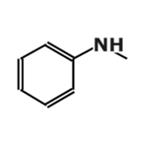
US $2430.00/kg2025-04-21
- CAS:
- 100-61-8
- Min. Order:
- 5000kg
- Purity:
- 99%
- Supply Ability:
- 200 mt
